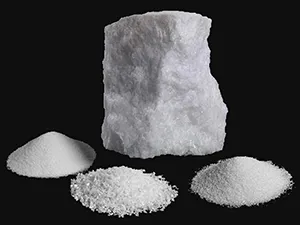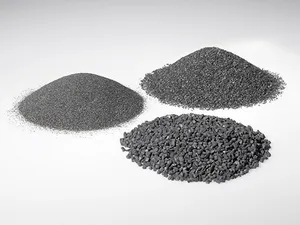Step 1: Raw material preparation: chromite ore, already crushed into powder in South Africa, undergoes water washing to screen particle size, eliminating impurities and mud.
Step 2: Drying step: the washed raw material is dried to remove moisture.
Step 3: Particle sizing: The dried material is then passed through a vibrating sieve to attain the desired particle size required by customers.
Step 4: Magnetic separation: Sieved particles undergo magnetic separation to remove iron and silicon. Post-separation, chromite content reaches above 46%, while silicon content remains below 1%.
Step 5: Packaging: the processed material is then packaged as finished products.

White fused alumina is produced from high-quality aluminum oxide powder, refined and crystallized through electric arc smelting.

Zirconia fused alumina is produced by melting aluminum oxide and zirconium oxide in an electric arc furnace at temperatures above 2000°C.
Black silicon carbide is produced by smelting quartz sand, petroleum coke (or coal coke), wood chips, and other raw materials in a resistance furnace.

Chromite foundry sand, with its main chemical component Cr2O3, boasts thermal stability, high thermal conductivity, and excellent resistance to alkali slag.